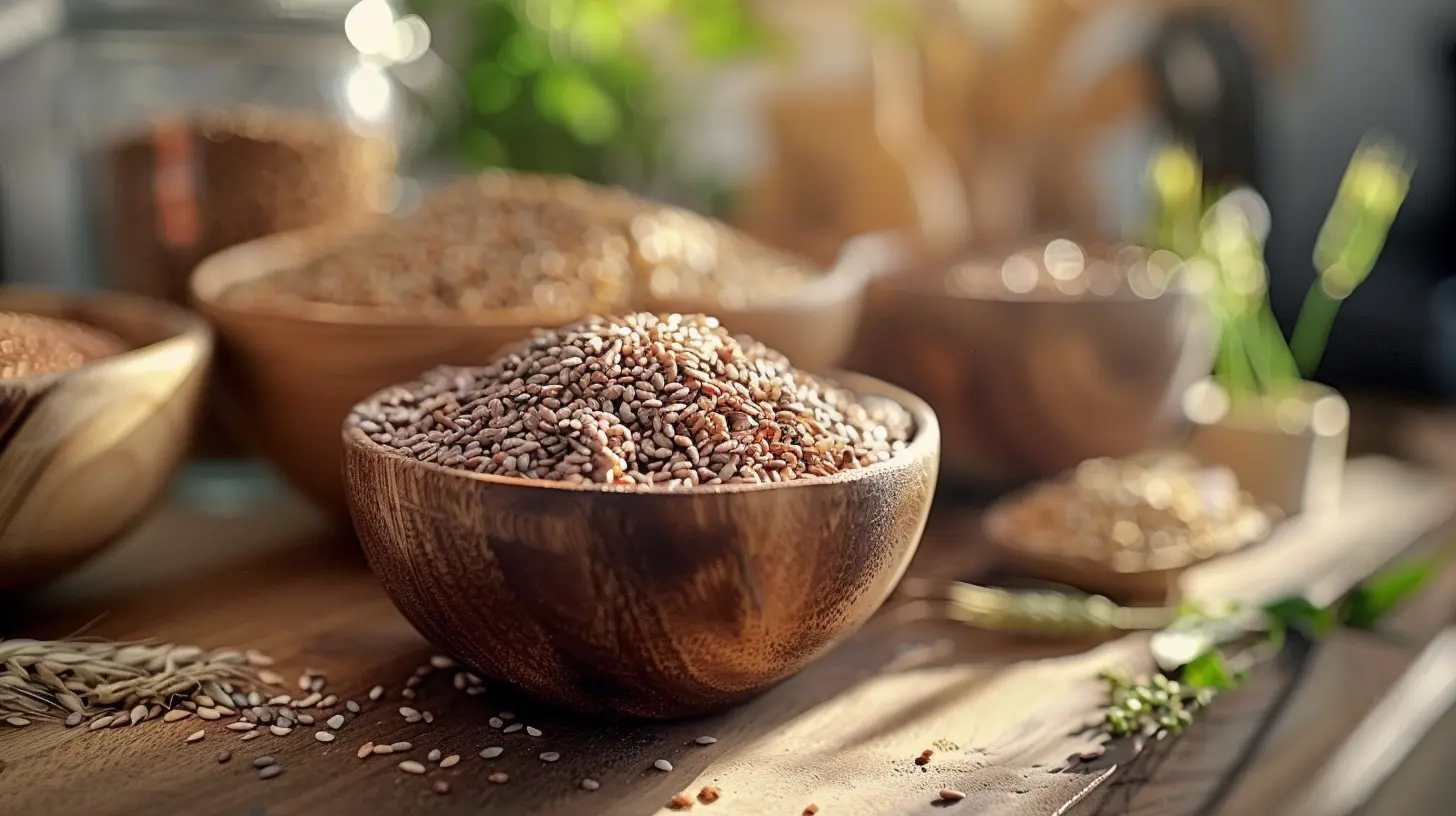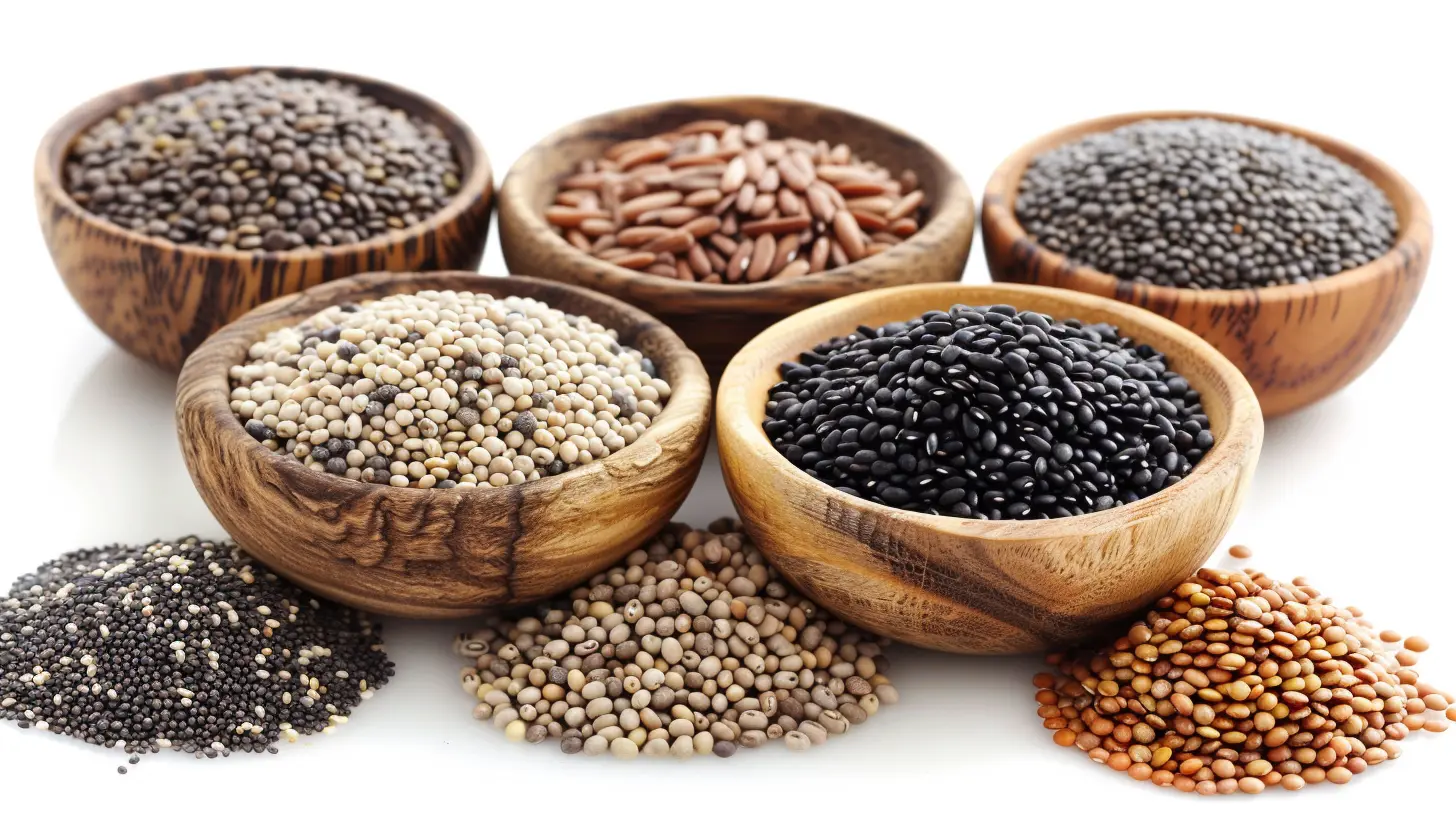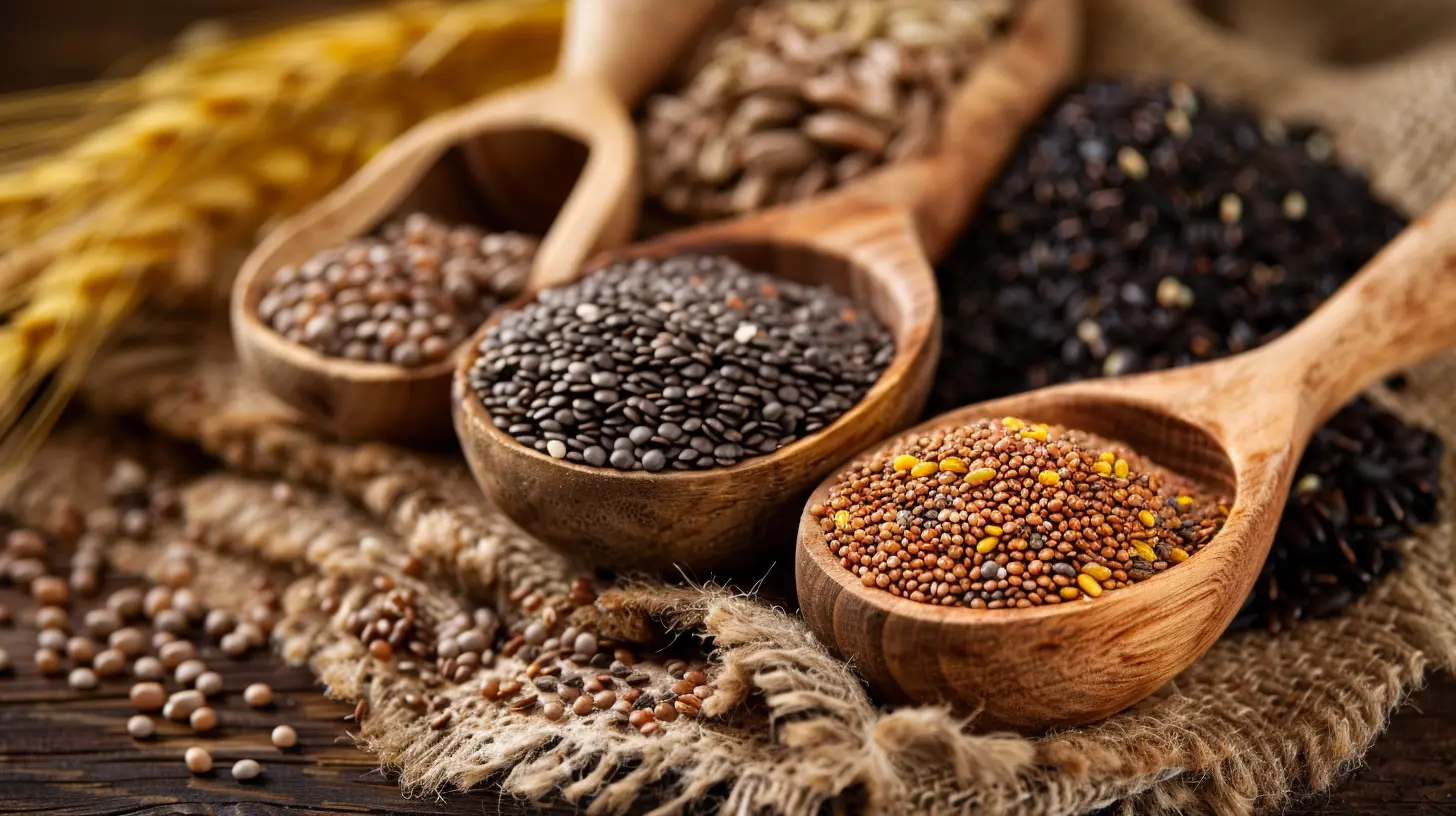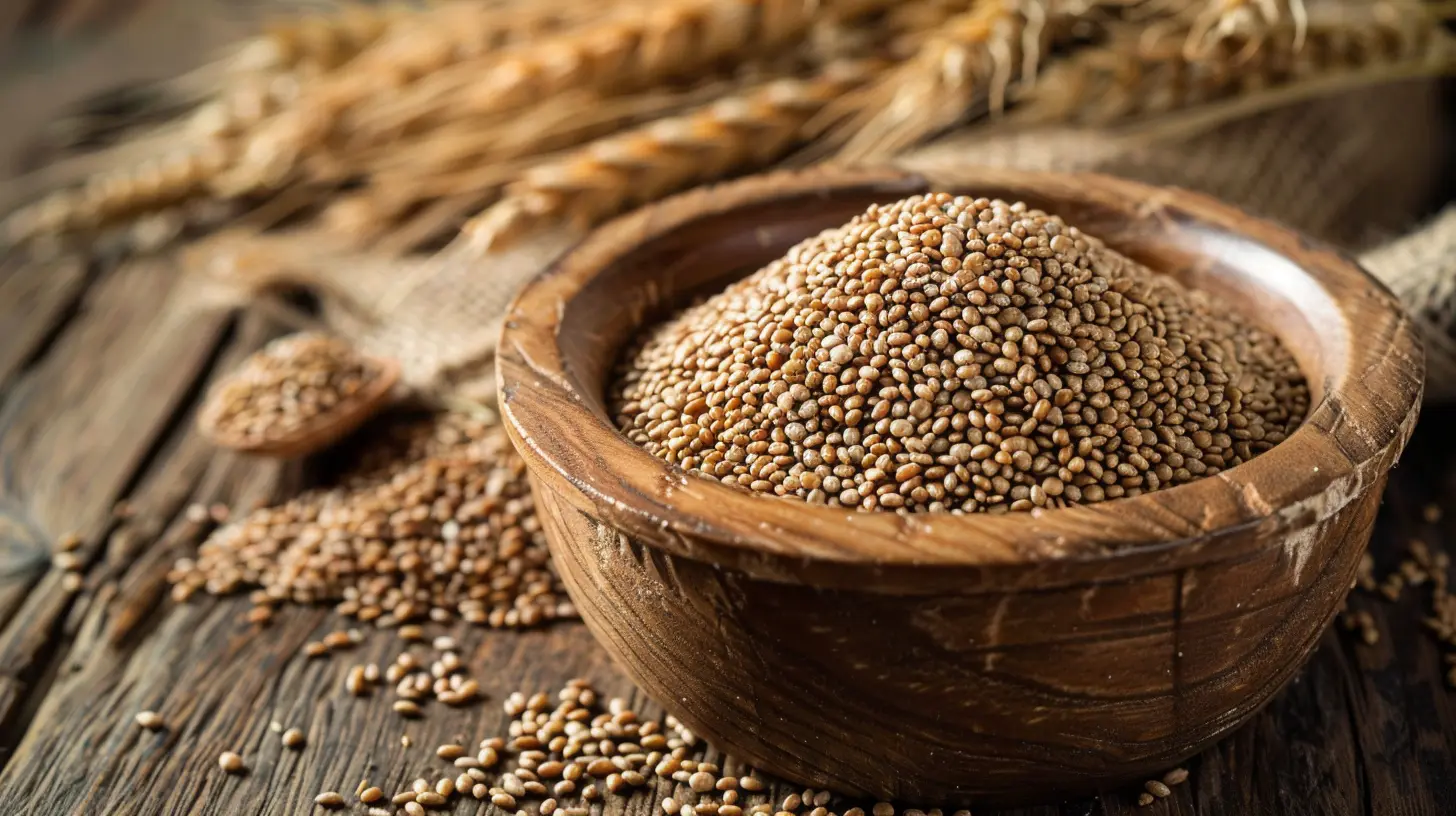Understanding the Different Types of Fiber and Their Benefits
13 June 2025
When it comes to living a healthy lifestyle, there’s one nutrient that often takes the backseat: fiber. Sure, we’ve all heard that fiber is “good for digestion,” but there’s so much more to it than that. Fiber is like the unsung hero of nutrition, quietly working in the background to keep us healthy in ways we might not even realize. In this article, we’re going to break down the different types of fiber and why you should give this powerhouse of a nutrient the attention it truly deserves.
So, grab a cozy seat (and maybe a fiber-packed snack), and let’s dive in! 
What Exactly Is Fiber?
Before we dig into the details, let’s start with the basics. Fiber is a type of carbohydrate that your body can’t digest. Unlike other carbs, which are broken down into sugar molecules, fiber passes through your digestive system intact.Sounds weird, right? A carb that doesn’t break down? But that’s actually what makes fiber so special. Its journey through your digestive tract is what gives it the ability to do its job—and oh boy, does it have a lot of responsibilities! 
The Two Main Types of Fiber
You’ve probably seen “dietary fiber” listed on food labels, but did you know that fiber actually comes in two varieties? That’s right—fiber isn’t a one-size-fits-all kind of deal. The two main types are soluble fiber and insoluble fiber, and they each play unique roles in keeping you healthy.1. Soluble Fiber: The Gel-Former
Picture this: soluble fiber is like a friendly sponge that absorbs water in your gut and turns into a gel-like substance. This gel slows down digestion, which is a good thing because it helps your body absorb nutrients more effectively.Benefits of Soluble Fiber
- Lowers Cholesterol: Soluble fiber helps reduce LDL cholesterol (a.k.a. “bad” cholesterol) by binding to it and carrying it out of your body.- Regulates Blood Sugar: It slows down how fast sugar is absorbed, keeping blood sugar levels steady.
- Improves Gut Health: Soluble fiber acts as food for the good bacteria in your gut, helping them thrive.
Best Sources of Soluble Fiber
You’ll find soluble fiber in foods like:- Oats (hello, oatmeal lovers!)
- Apples (don’t skip the skin—lots of fiber lives there!)
- Citrus fruits (those orange slices are doing more than just being juicy!)
- Beans and lentils
2. Insoluble Fiber: The Gut Broom
Now let’s talk about insoluble fiber. Unlike its water-loving sibling, insoluble fiber doesn’t dissolve in water. Instead, it stays pretty much the same as it moves through your digestive system. Think of it as nature’s broom—it sweeps through your intestines, keeping things moving smoothly.Benefits of Insoluble Fiber
- Promotes Regularity: If you’ve ever had a problem in the “going” department, insoluble fiber could be your new BFF.- Prevents Constipation: It adds bulk to your stool, making it easier to pass. (Yep, we’re going there!)
- May Reduce the Risk of Colon Issues: By keeping everything moving along, it might help reduce the risk of colon-related diseases.
Best Sources of Insoluble Fiber
Looking to add more insoluble fiber to your diet? Stock up on these:- Whole grains (think brown rice, quinoa, and whole wheat bread)
- Nuts and seeds
- Vegetables (especially the crunchy ones—broccoli, carrots, and zucchini are great options!)

Beyond the Basics: Other Types of Fiber
Now that you’re up to speed on soluble and insoluble fiber, let’s talk about a few “specialty” fibers that you might not know about but are equally awesome for your health.Resistant Starch
Resistant starch acts like soluble fiber in some ways, but it also has its own superpowers. It bypasses digestion and ferments in the large intestine, where it feeds good gut bacteria.Benefits of Resistant Starch
- Improves gut health- Helps control blood sugar levels
- May even enhance fat burning
You can find resistant starch in foods like green bananas, cooked and cooled potatoes, and legumes.
Prebiotic Fiber
Prebiotic fiber is like the VIP guest that brings life to your gut bacteria party. It feeds the beneficial bacteria in your gut, helping them flourish.Benefits of Prebiotic Fiber
- Boosts gut health- Stimulates the growth of probiotics (the good bacteria)
- Supports a healthy immune system
Foods rich in prebiotics include garlic, onions, asparagus, and chicory root. 
Fiber’s Role in Overall Health
Okay, so fiber is clearly good for digestion, but let’s not stop there. The truth is, fiber benefits a whole bunch of different systems in your body. It’s like that overachieving coworker who goes above and beyond their job description.Heart Health
Both soluble and insoluble fiber work together to keep your heart happy. Soluble fiber lowers cholesterol, while insoluble fiber helps with weight management, one of the keys to maintaining a healthy heart.Weight Management
Fiber is a sneaky little tool that helps you stay full longer. Foods high in fiber take longer to chew and digest, meaning you’re less likely to overeat. Plus, many fiber-rich foods are low in calories but high in volume—win-win!Gut Health
Your gut is home to trillions of bacteria, and these little guys love fiber. A fiber-rich diet can lead to a more balanced and diverse microbiome, which is essential for overall health.Reduced Risk of Chronic Diseases
Studies have linked a high-fiber diet to a lower risk of diseases such as Type 2 diabetes, certain types of cancer, and even Alzheimer’s. It’s like giving your body an extra layer of protection against the big, scary stuff.How Much Fiber Do You Need?
Now that you know how amazing fiber is, you might be wondering: “How much do I actually need?” Great question!The general recommendations are:
- Women: About 25 grams per day
- Men: About 38 grams per day
If you’re not hitting these numbers yet, take it slow. Adding too much fiber too quickly can lead to bloating (and, let’s be honest, some not-so-fun gas).
Easy Tips to Get More Fiber
Ready to up your fiber game? Here are some simple tips:- Start Your Day Right: Swap sugary cereals for oatmeal or whole-grain toast.
- Go Whole: Choose whole fruits over juices and stick to whole grains instead of refined ones.
- Snack Smart: Keep nuts, seeds, or veggie sticks handy for quick, fiber-packed snacks.
- Sneak in Some Legumes: Add beans or lentils to soups, salads, or even casseroles.
- Don’t Forget Variety: Eating a wide range of fiber-rich foods will ensure you’re reaping all the benefits.
A Quick Word of Caution
While fiber is fantastic, balance is key. Overloading on fiber without enough water can lead to discomfort—or worse, constipation. Make sure to drink plenty of fluids to help fiber do its job.Wrapping It Up
So there you have it: the lowdown on fiber and why it’s an absolute superstar nutrient. Whether it’s keeping your digestion on track, supporting heart health, or feeding your friendly gut bacteria, fiber is doing the most to keep you feeling your best.The best part? It’s so easy to find and enjoy fiber-rich foods. From apples to oatmeal to lentils, there’s a fiber-packed option for everyone. So, what are you waiting for? Start adding more fiber to your plate today—you’ll thank yourself later!
all images in this post were generated using AI tools
Category:
Fiber Rich DietAuthor:

Holly Ellison
Discussion
rate this article
2 comments
Raine McCullough
Fiber: the unsung hero of the digestive world! It’s like a broom for your insides—sweep away!
November 12, 2025 at 5:49 PM

Holly Ellison
Absolutely! Fiber truly plays a vital role in digestive health, acting like a natural broom to keep everything running smoothly. Thanks for highlighting its importance!
Ryder Kelly
Fiber types significantly impact digestion and overall health—essential knowledge!
June 26, 2025 at 5:08 AM

Holly Ellison
Thank you! Understanding fiber types is crucial for optimizing digestion and enhancing overall health. I'm glad you found it informative!


